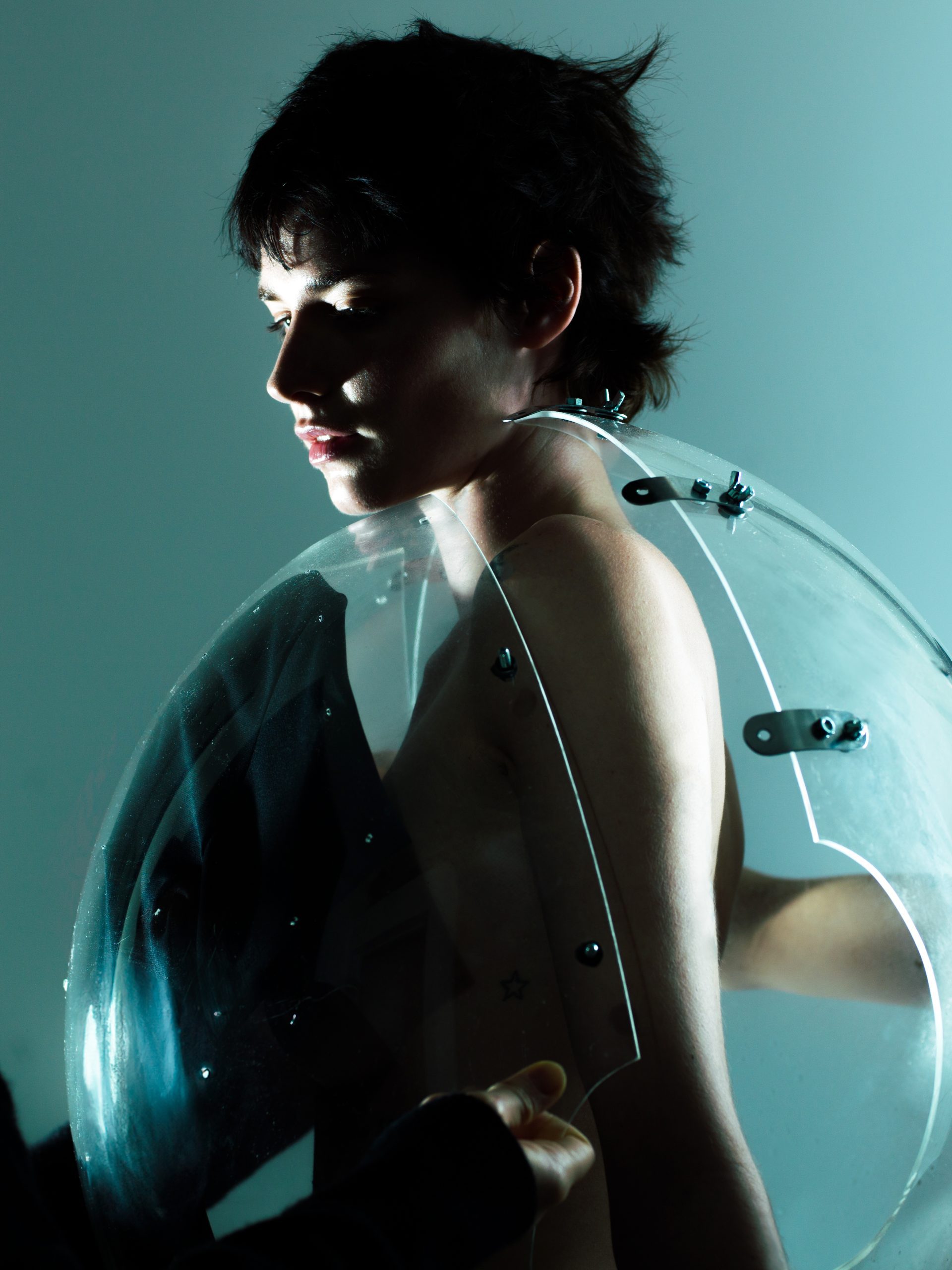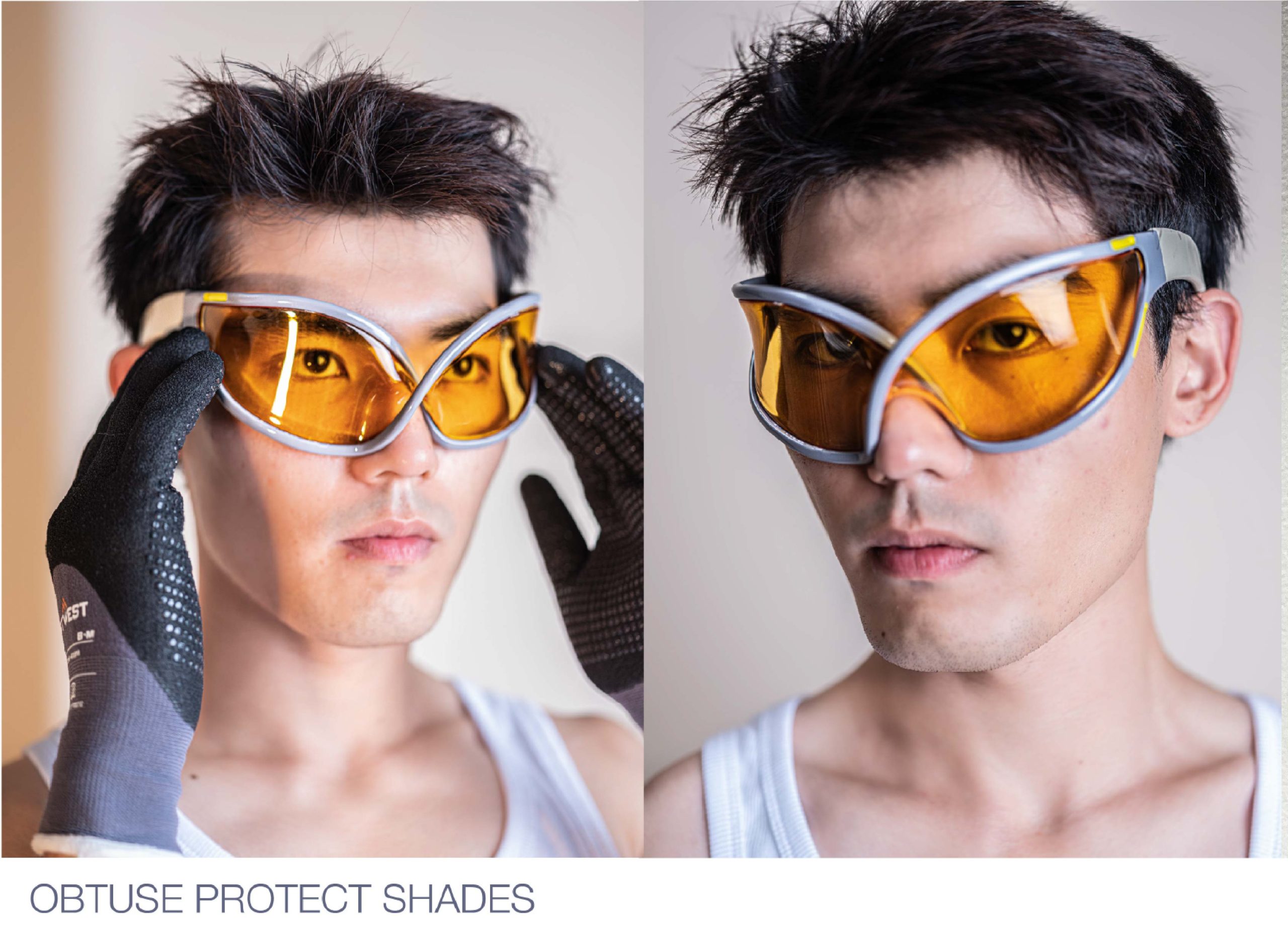On Sunday 19th of February, Helen Kirkum presented “Step Back” – a stripped back presentation to debut the second run of her scrap collaged sneakers, Palimpest 002.
The installation, that had in fact been completely reworked just 10 days prior to its opening, was clean and uncomplicated. Helen invited guests to periodically move into a darkened studio space, where they were met with rows of 824 single shoes, the waste stock that will be deconstructed and reshaped into the small run of 137 Palimpest sneaker pairs. A small dated TV in the corner projected pixelated imagery of the studio workers collecting, washing, repairing and organising the sneaker raw materials. The power of a small and close-knit collective of textile workers, aligned in their values and visions, was palpable; the rolling tape was almost reminiscent of home video reels filled with a raw love and sincerity.
“I wanted the guests to feel like they were immersed in the warehouse with us on one of our sneaker-saving excursions and to see the possibilities that I see embedded in the raw materials that are considered waste”
On Instagram, Helen later posted her so-called manifesto, a collection of scribbled and unkempt thoughts and feelings that juxtaposed the simplicity of the visual presentation she had created at The Old Selfridge’s Hotel. Purportedly, in an attempt to rethink her presentation, she had jotted these down one evening, hoping to reshape them into a script of meaning to guide the design of her installation. The result was an unorganised rambling of her creative process, almost lyrical, like a stream of consciousness, her words projected a greater sense of emotion onto what at first glance seems like a rigidly environmentally responsible initiative. Its composition, a series of flippant thoughts quite literally sliced into tickets of paper and woven together into some sort of flowing meaning, is wittily analogous to the creative process of her shoes.
Each month the young studio sorts through a staggering 800 kg of material, equating to approximately, 6552 shoes. The number of sneakers they are able to create, is directly equivalent to the number of waste sneakers they are able to collect and revive. It supposedly takes 6 single shoes, torn apart, washed, repaired and refashioned to make just the upper panel of one pair of Palimpest Sneaker in the 002 production.
The restricted drop not only makes this sneaker all the more exclusive and sought after, propelling the Helen Kirkum brand image, but it hammers home notable awareness about the longevity and adaptability of recyclable materials. It is incontestable that this studio is helping to pioneer the path to a more sustainable, and material and resource informed production path; the project genuinely fulfils the strap line, “History in the remaking”. Yet, with the increased methodology and successes of recycling, people seem to veil the fact that waste is still a major issue. New recycling technology doesn’t mean we can shoo away our overconsumption vices back into the shadows. Helen’s small production run for the newest collection of sneakers not only affiliates her with the exclusivity of streetwear hype and aesthetic in which she is trying to emerge, but poignantly reminds her customers of the limitations of production, of leathers and of textiles. Crucially, recycling isn’t a magic wand that can cover up all of the fashion industry’s debauchery. Recycling to recreation does not, and cannot, follow a 1:1 ratio.]
Available in 3 new colour ways – Dusty Stone, Wild Moss and Faded Black – these sneakers appeal directly to the consumer desire for exclusivity and individuality, with each pair having a distinctly unique composition. Mismatched and collaged, each pair claims to be an ode to the process of making, to the process of combining to make anew. The sneakers have their own history and their own story, pieced together from those who have worn the leathers before. Elegantly clear, fixed, and narrow in its mission is alluringly perfect for the 2023 audience, how her studio expands or remains will be particularly interesting to monitor.
By Hebe Street from GLITCH Magazine





